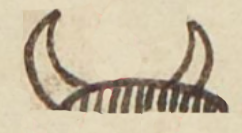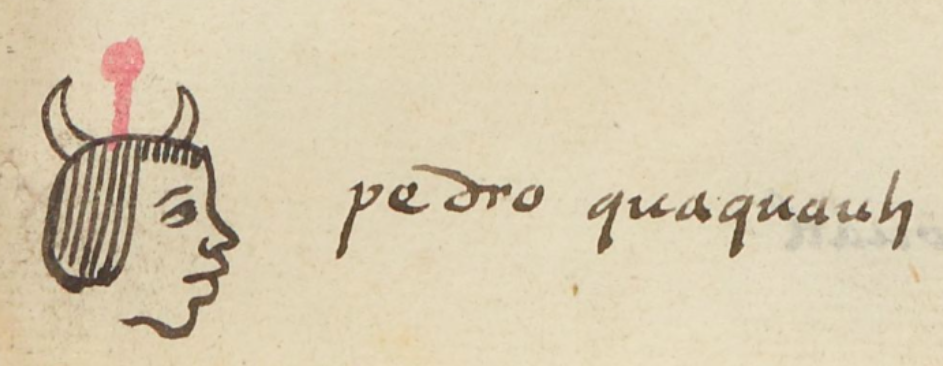cuacuahuitl (MH483r)
This element for horns (cuacuahuitl serve as the visual reference to a person's name, Cuacuauh. They are two pointed horns at the top of a person' head. Each one curves in toward the center. The entire glyph is drawn with black lines.
Stephanie Wood
These appear to be horns of the sort one would find on an ox or a bull (cuacuahu(e)), rather than antlers. The personal name that these horns point to, Cuacuauh, may also be in indirect reference to such an animal, even though the horns have been placed on the man's head. Juan José Batalla Rosado (El Arte de Escribir, 2018, 76) includes the cuacuahuitl ("cuerno de animal") in his list of visual loans. He finds the Matrícula de Huexotzinco to show the greatest degree of Western influence of all colonial codices.
Stephanie Wood
1560
Xitlali Torres
cuerno, cuernos

cuacuahu(itl), horn(s) or antler(s), https://nahuatl.wired-humanities.org/content/cuacuahuitl-2
cuacuahu(e), ox, bull, or other horned animal, https://nahuatl.wired-humanities.org/content/cuacuahue
Matrícula de Huexotzinco, folio 483r, World Digital Library, https://www.loc.gov/resource/gdcwdl.wdl_15282/?sp=45&st=image.
This manuscript is hosted by the Library of Congress and the World Digital Library; used here with the Creative Commons, “Attribution-NonCommercial-ShareAlike 3.0 License” (CC-BY-NC-SA).


